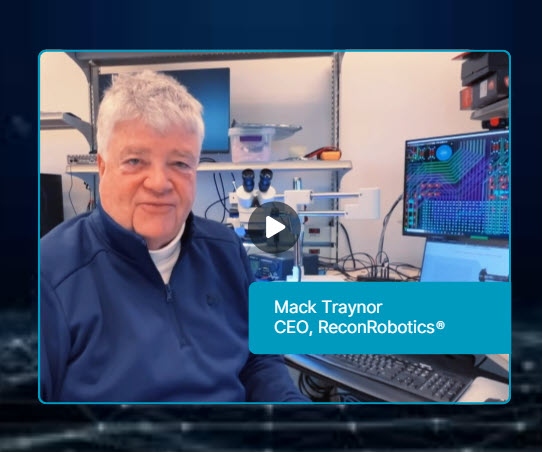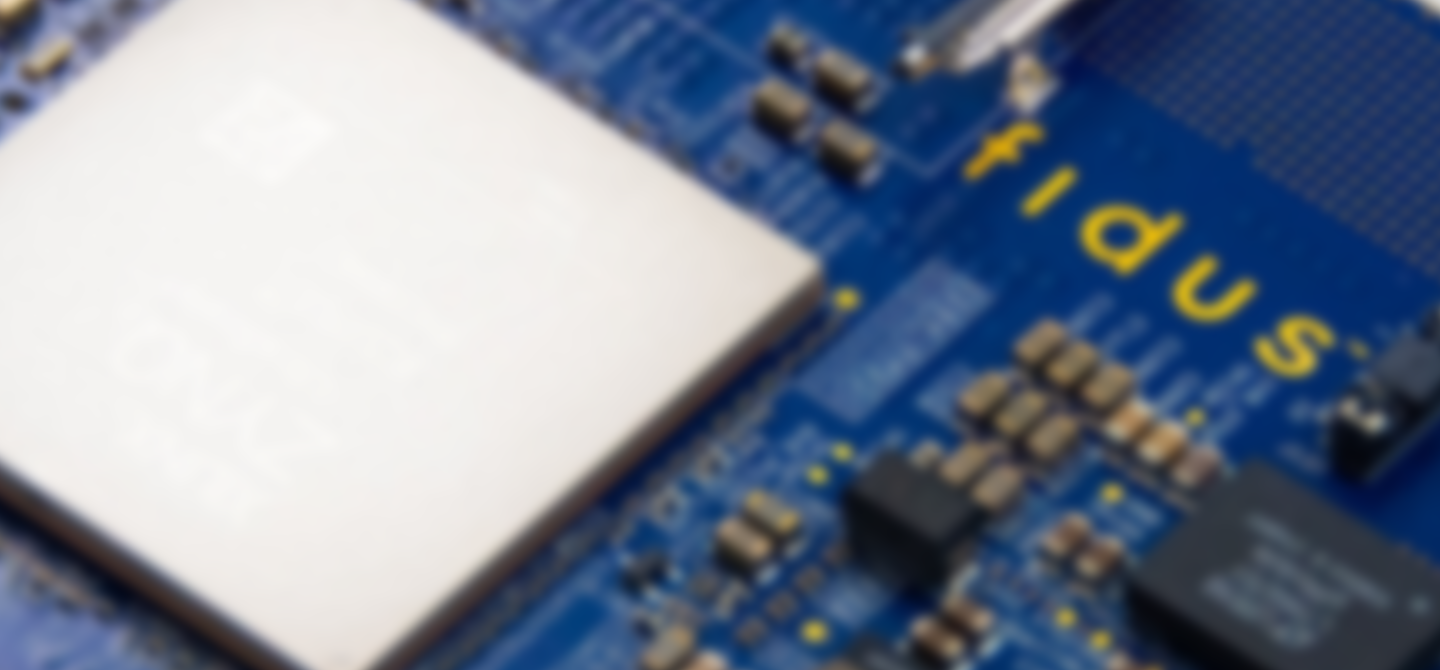Back to top

Fidus Solution Portfolio
We transform ideas, visions and concepts into products.
Filter by

Aerospace/Defense
ReconRobotics® Tactical Micro-Robot Software Enhancement
We partnered with ReconRobotics®, the world leader in tactical micro-robot and personal sensor systems, to deliver critical software enhancements for their next-generation hardware platform. Our team developed and optimized the embedded software stack, enabling reliable hardware operation, efficient communication protocols, and seamless integration with system components. These enhancements provided the robust foundation needed to advance the product to its next stage of development and deployment.
Embedded C/C++, Real-Time Operating Systems (RTOS), Device Drivers, Hardware Bring-up Tools

Aerospace/Defense
Embedded Software Design for Space Technology
We worked with an aerospace leader to provide embedded software design and FPGA engineering support for a custom space technology development platform based on AMD/Xilinx® ZU5EV architectural silicon. Our team optimized DDR4, USB3, and Ethernet communication protocols while reviewing and refining existing Vivado projects. The collaboration extended into a multi-phase engagement, ensuring seamless firmware upgrades and FPGA performance validation.
AMD/Xilinx® ZU5EV FPGA, DDR4, USB3, Ethernet, Vivado Design Suite

Communications
Broadband Communications Project
This reference design targets the 5G NR millimeter wave wireless network leveraging mmWave Phased Array Antennas for Broadband Connectivity. The reference design was done on an AMD/Xilinx platform to support and enable eCPRI | MAC | Optics.
5G, Beam forming, Clock locking, PTP 1588, 25G ethernet, high speed ADC and DAC

Computing
FPGA-based signal processing platform
This prototype was developed as an FPGA-based signal processing platform that will be used to emulate some of the Client’s desired ASIC functions.
This Emulation System relied on the AMD ZCU208 RFSoC Evaluation Platform and a minimal software set which will boot PetaLinux and provide register access to Fidus determined FPGA parameters. It also allows the configuration of the onboard clocking subsystem.
PYNQ, AMD RFSoC, Jupyter (Jupiter) Notebooks, MATLAB, Simulink, ZCU208, HDL Coder, IPI, Python

Communications
Communication Payload Design for LEO Satellite Systems
Participated in a Communication Payload Design for LEO Satellite Systems, leveraging Fidus Software Engineers
Jupityr Notebooks, x86, yocto, python, Spacewire, scripts, commanding and telemetry, control over x-band, security, encryption, upgrade, D-Bus, protobuf, AES, Gitlab

Aerospace/Defense
Satellite On-Board Processing Technology for SAR-XL
We worked with a space technology client to design and build on-board processing hardware for a Synthetic Aperture Radar (SAR-XL) satellite system, utilizing Microchip PolarFire® SoC. Our scope included hardware architecture, schematic design, PCB stack-up optimization, DDR memory routing, and FPGA firmware development. Over a 2-year engagement, we ensured the solution met space-grade validation and operational requirements for performance and reliability.
Microchip PolarFire® FPGA, DDR Memory Routing, Space-Grade Hardware Validation

Aerospace/Defense
Airborne Recording and Data Transfer System Upgrade
We partnered with an aerospace and defense client to upgrade a legacy airborne recording and data transfer system leveraging a Microchip PolarFire® SoC (MPFS250T-FCVG484E). Our team delivered a comprehensive FPGA staffing engagement to implement GRPCI and NANDCNTRL2 VHDL IP, I2O interfaces, and data mover FPGA command controls. We also developed design documentation and FPGA verification plans, successfully completing the project within a 14-week timeline.
Microchip PolarFire®

Medical/Industrial
Line Scan Camera System Design and FPGA Integration
We collaborated with an imaging technology client to design and optimize a line scan camera system using Microchip PolarFire® FPGA with an embedded soft RISC-V processor core. Our engagement included hardware design, FPGA implementation, mechanical layout, and sensor integration to ensure precise alignment and optimal optical performance. Over a 40-week timeline, we delivered a robust system featuring sensor calibration, PCB layout refinement, and enclosure design for optical alignment.
Microchip PolarFire® FPGA, RISC-V Processor, CIS Sensor Integration

HiSPI-to-MIPI Interface Optimization for Traffic Monitoring Systems
We supported a transportation and public safety client in resolving interface issues between a CMOS image sensor and a Lattice CrossLink device (LIF-MD6000-6MG81I) within their traffic monitoring camera system. The system experienced failures when MIPI CRC was present. Our scope included FPGA design review, hardware probing, signal chain analysis, and defining testing protocols. Through targeted simulation and signal analysis, we verified that the HiSPI-to-MIPI CRC conversion was functioning correctly and identified system-level adjustments to resolve the issue. The project was successfully completed in 3 days, delivering a robust and reliable camera interface solution.
HiSPI, MIPI CRC, CMOS Image Sensor, Lattice CrossLink FPGA

Industrial
FPGA Conversion and Signal Integrity Optimization for Industrial Motion Control
We collaborated with an industrial client specializing in motion and control technologies for oil and gas applications to address challenges in FPGA conversion and signal integrity. Transitioning from their incumbent FPGA vendor, we migrated their design to the Lattice CrossLink-NX (LIFCL-40-7BG256I) platform using Radiant 3.2.1. Our efforts included troubleshooting FPGA issues and conducting signal integrity analysis to reduce market entry risks. The result was an optimized FPGA design that delivered low-power operation, high-speed MIPI bridging, and reliable hardware performance.
CrossLink-NX FPGA, Radiant 3.2.1, MIPI D-PHY, LVDS, SLVS, OpenLDI (OLDI)
